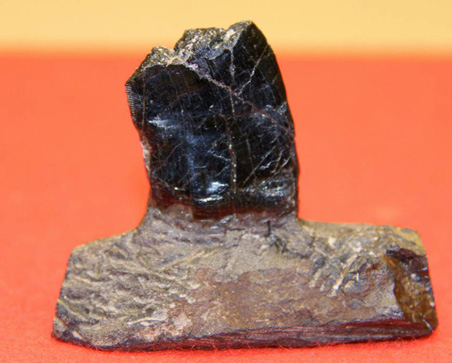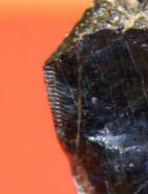Fragments of Fossilised Teeth Hint at Late Cretaceous Japanese Theropod According to New Research
Fossilised Teeth Fragments Go on Display
Fossils of dinosaurs from Japan are extremely rare, those that have been found are in most cases extremely fragmentary. Japan lacks the extensive bone beds that we have had the chance to visit in places such as in Dinosaur Provincial Park (Alberta, Canada). However, a dedicated team of researchers are slowly but surely piecing together the ancient flora and fauna of the land we now know as Japan.
Late Cretaceous Theropod Teeth
Some of the very latest fossil discoveries are being put on display for the first time today, including two tooth fragments that most likely come from a carnivorous theropod dinosaur that roamed the Nagasaki Peninsula something like 84 million years ago (Santonian faunal stage).
Dr Kazunori Miyata of the Fukui Prefectural Dinosaur Museum and one of Japan’s leading experts on vertebrate fossils came across the fossils in July 2011 whilst exploring the Mitsuze layer on the western coast of the Nagasaki Peninsula. It is not possible to ascribe the fossilised teeth to any specific genera of the Theropoda, although the largest fragment (35.4 mm x 26.8 mm x 11.2 mm) probably represents a proportion a six centimetre long tooth (root plus crown).
Unknown Theropod Genus
The other fragment, although smaller measuring 34.2 mm long and 13.6 mm wide probably came from the same species if not the same individual specimen. Comparisons with other Late Cretaceous theropods suggests a predator in excess of seven metres in length, although whether this animal is a tyrannosaur or possibly a member of some other theropod family remains uncertain.
Picture credit: KYODO
Serrations (saw-like edges) along one side of a tooth are still visible, this is an indication that these teeth were from a meat-eating dinosaur. The teeth discovery extends the known range of carnivorous dinosaurs to thirteen prefectures in Japan, from Iwate in the north-east to Kagoshima in the south-west, although these fossil finds do not represent evidence of just a single, carnivorous species.
Picture credit: KYODO
The Mitsuze Formation
Fossils from the Mitsuze Formation include pterosaurs, crocodilians, chelonians (turtles) and fragments of herbivorous dinosaur material. Such is the relative abundance of fossil material associated with this strata that researchers have used this strata to help date other Upper Cretaceous, fossil bearing geological formations in Japan.
The Nagasaki Board of Education in collaboration with staff at the Fukui Prefectural Dinosaur Museum have created a display of this new fossil material in the city of Nagasaki (Sanwa Gyosei Centre). The exhibit will than be relocated to the Nagasaki Science Museum until the end of this month. From here the fragile fossils will be taken to Fukui Prefectural Dinosaur Museum so that they can take part in a temporary exhibition showcasing Japan’s dinosaurs which runs from August through to mid October. After this, the 84 million year old teeth will be put on permanent display back in the Nagasaki Prefecture (Nagasaki Science Museum).
To read an article about a Japanese school boy who discovered the fossilised remains of a dinosaur toe bone: Schoolboy finds dinosaur toe bone.



